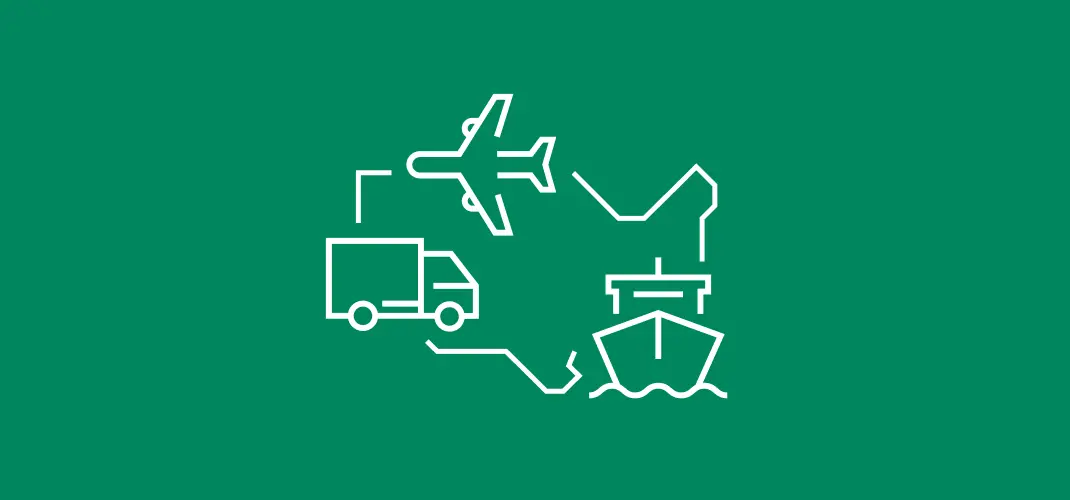What transportation method first comes to mind when thinking of international transportation? Let me guess. Is it ocean freight? Indeed, ocean freight is a king among cross-border shipping methods. This method, steeped in history, combines cost efficiency with the remarkable capacity to move vast volumes of merchandise across the seas. However, there is the other side of the coin, such as intricate regulations, port congestion, and risks of damage during handling and transportation along with acts of Gods like storms and hurricanes. Conquering these challenges requires a structured, well-thought-out plan, like the one below.
Step-By-Step Guide to Safe and Efficient Ocean Transportation to the USA

The process of transporting goods across oceans from one country to another using cargo ships stands out for its ability to handle massive volumes at lower costs than air freight. To make it run hassle-free and efficiently, consider the following steps:
Step 1: Research and Compliance
Before venturing into the U.S. market, it’s always a good idea to conduct comprehensive research and ensure compliance with both international and U.S. laws and regulations. The complexity of tariffs, trade agreements, and regulatory requirements poses significant challenges. Practical solutions include keeping abreast of the latest trade laws, leveraging technology to streamline compliance processes, and partnering with experts who can ensure that your cargo meets all legal requirements for entry into the U.S. market.
Step 2: Choose a Port of Entry
Selecting an optimal port of entry is a critical logistical decision. Challenges include assessing port capabilities, understanding congestion levels, and evaluating the port’s connectivity to inland transportation networks. The ideal solution involves a thorough analysis of the intended final destination, port facilities, operational efficiency, and cost implications. Engaging with logistics experts with in-depth knowledge of port operations across the U.S. can guide shippers in choosing the most suitable port, ultimately saving time and reducing costs.
Step 3: Secure Documentation
The extensive paperwork list includes the bill of lading, commercial invoice, packing list, and any specific certificates required for your cargo. Documentation mistakes can lead to delays, fines, or even cargo seizure. To mitigate these risks, shippers should prioritize accuracy and completeness in documentation, double-checking all paperwork and utilizing digital tools for document management. Collaboration with experienced logistics partners can further streamline this process, ensuring compliance and facilitating a smooth customs experience.
Step 4: Hire a Customs Broker
Customs brokers are experts in navigating the maze of customs regulations and procedures. The challenge lies in choosing a broker who is not only well-versed in U.S. customs laws but also responsive and reliable. The solution is to select a broker with a strong track record, excellent communication skills, and a deep understanding of your specific needs. This partnership is crucial for avoiding customs-related hurdles, expediting the clearance process, and ensuring your shipments comply with all regulatory requirements.
Step 5: Ensure Compliance with ISF
The Importer Security Filing (ISF), also known as “10+2”, is a U.S. Customs and Border Protection (CBP) requirement that significantly affects ocean freight shipments. Non-compliance or inaccuracies in ISF submissions can result in substantial fines and delays. The challenge for shippers is to ensure timely and accurate submission of all required data. Solutions include investing in compliance software or services and working closely with your customs broker, who can manage ISF filings on your behalf, ensuring compliance and avoiding potential penalties.
Step 6: Arrange Cargo Transportation
Organizing the transportation of your cargo to the port of departure involves coordinating multiple logistics partners and modes of transport. Challenges are selecting reliable carriers, managing schedules, and dealing with unforeseen disruptions. Effective solutions involve strategic planning, building strong relationships with trusted logistics providers, and leveraging technology for real-time tracking and updates. This ensures your cargo arrives at the port on time and in good condition, ready for its ocean voyage.
Step 7: Container Booking
Securing the appropriate container for your shipment is critical for protecting your goods and optimizing costs. The fluctuating availability of containers and varying rates present challenges in planning and budgeting. Early engagement with shipping lines, understanding the different types of containers available, and accurately assessing your cargo’s requirements are essential steps. Negotiating rates and booking well in advance can secure the most cost-effective and suitable options for your shipment, ensuring it is transported safely and efficiently.
Step 8: Monitor Cargo Movement
Visibility into the movement of your cargo is essential for operational planning and customer satisfaction. The challenge lies in tracking shipments across vast ocean distances and through various transit points. Modern solutions include GPS tracking, IoT devices, and accessing shipping lines’ tracking tools, which offer real-time data on your cargo’s location and status. This level of monitoring enables proactive management of the supply chain, allowing shippers to anticipate and mitigate potential delays.
Step 9: Port of Entry Arrival
Upon arrival at the U.S. port of entry, the cargo must be processed for entry. This stage can be delayed due to documentation errors, customs holds, or port congestion. Proactive measures include ensuring all documentation is in order, pre-arranging for customs clearance with your broker, and understanding the port’s procedures. Effective communication and coordination with logistics partners are essential to a smooth transition through this critical phase.
Step 10: Customs Entry
The customs clearance process is essential for the timely release of your cargo. This step requires meticulous attention to documentation and compliance with U.S. customs regulations. Working closely with your customs broker to prepare and submit all necessary documentation, including the entry summary (Form 7501), and ensuring that your cargo complies with all applicable regulations and requirements are essential practices. This diligence facilitates a swift customs clearance process, minimizing the risk of delays or penalties.
Step 11: Inspection and Release
U.S. Customs and Border Protection inspections are a standard part of the import process. Your cargo might be selected for examination, which can be a source of delay. Ensuring that your shipment complies with all regulations, is properly documented, and is accurately declared minimizes the likelihood of extensive inspections. Clear and timely communication with your customs broker and adherence to best practices in cargo packing and documentation can expedite the inspection process and lead to the prompt release of your goods.
Step 12: Arrange Transportation
The final leg of your cargo’s journey involves transportation from the port to its ultimate destination. Challenges at this stage may arise from the need to coordinate timely pickup, select reliable inland transportation providers, and navigate local logistics. Solutions involve pre-planning the inland transportation, using trusted carriers with proven track records, and monitoring the delivery process to ensure your cargo reaches its final destination safely and on time.
U.S. Inbound Expertise

With a deep-rooted understanding of the complexities involved in ocean freight to the United States, U.S. Inbound shines with a high level of proficiency and reliability. Their specialization in navigating the multifaceted regulatory, operational, and logistical challenges of importing goods into the U.S. transforms the daunting task of international shipping into a streamlined process.
U.S. Inbound’s expertise is about optimizing every facet of the supply chain to deliver cost-effective, time-efficient solutions. Their strategic approach encompasses a comprehensive analysis of shipping routes, meticulous planning of cargo movement, and leveraging state-of-the-art technology for real-time tracking and updates. This type of management ensures that shippers can avoid common pitfalls such as delays, penalties, and unexpected costs, ultimately saving time and money.
Partnering with U.S. Inbound benefits businesses with a wealth of knowledge and resources, tailored strategies, and a commitment to excellence that strengthens and optimizes their supply chain.
Conclusion:
Safe and efficient ocean freight logistics chains are synonymous with meticulous planning, a comprehensive understanding of regulatory requirements, and the forging of strong partnerships with experienced logistics providers. By adhering to the steps outlined in this guide, international shippers can mitigate the challenges associated with ocean freight, ensuring their cargo’s efficient and compliant transit. Collaboration with reputed partners like U.S. Inbound offers invaluable expertise and support, smoothing the path across the ocean and beyond, enabling shippers to connect with the vast opportunities within the U.S. market.




